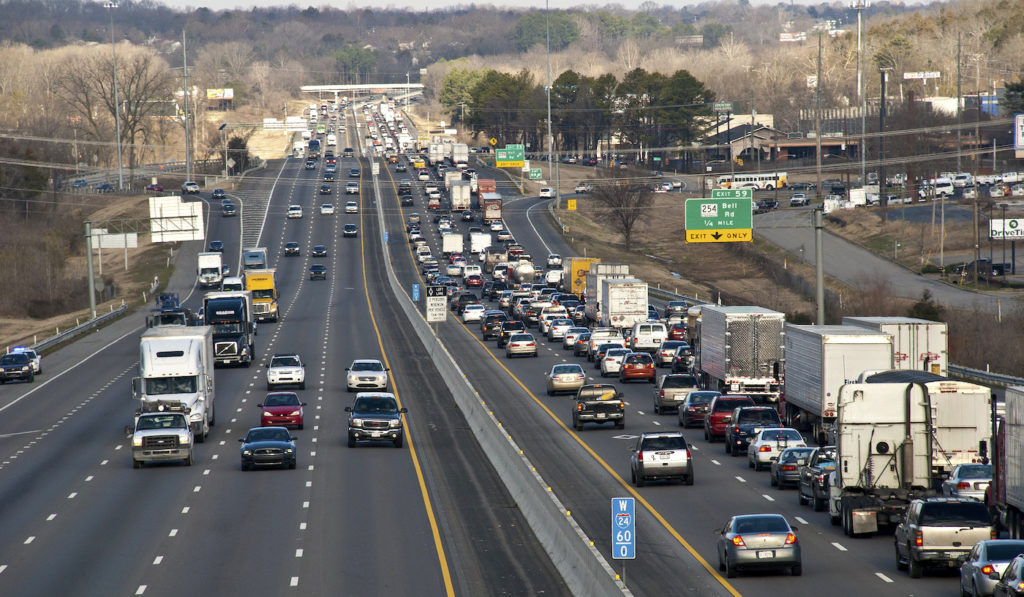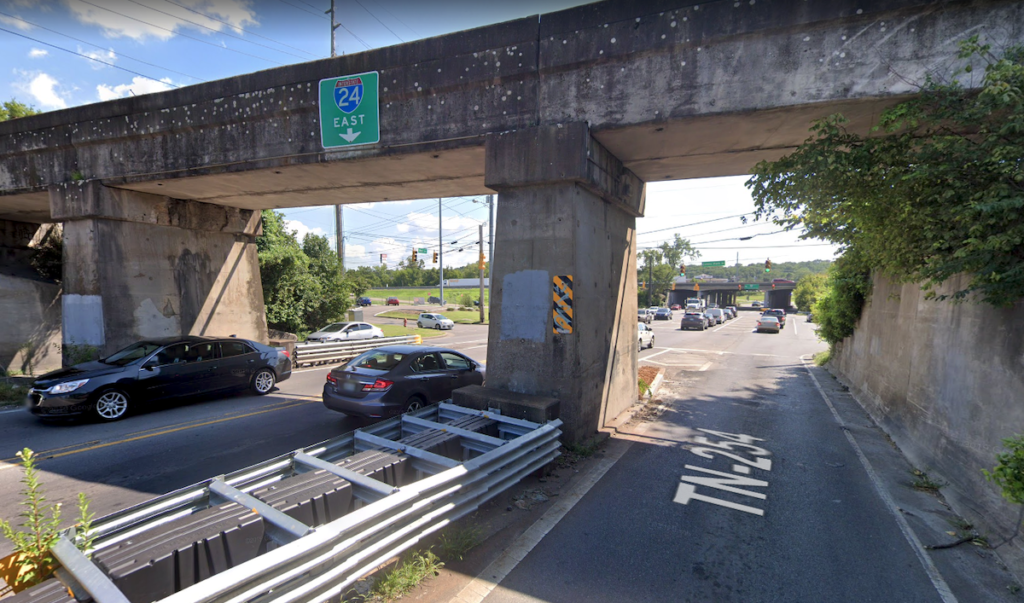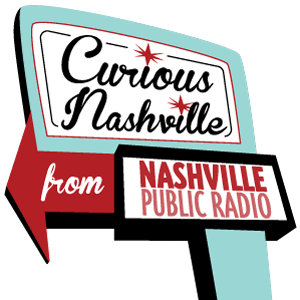
Confusing road lanes and limited traffic signals can make commutes on Bell Road excruciating around Interstate 24 and Exit 59.
“Traffic is not really a new story in Nashville, but that exit is particularly insane,” says Rusti Keen, who sat amidst the turmoil there twice a day for years.
She came to Curious Nashville with a question:
I would love to know the design story behind the Bell Road exit (Exit 59) on I-24, and any possible solutions that could happen for it, with so much housing construction in that area.
Bell Road plagues many motorists. Even Nashville-run Instagram account @cashvilleetc went so far as to call it the “worst intersection” in the city.
But Curious Nashville finds that some relief is coming for Antioch drivers.
Recipe for congestion
Keen moved to Bell Road in 2016, and she says traffic was already bad. Much of the congestion originates right at the ramp from I-24.
She has a list of gripes.
An overpass runs over Bell Road, and the massive concrete piers that support the bridge end up “corralling cars into lanes. They can’t maneuver if something is stopping up one lane.” Along with the bridge, there are stoplights that are so close to each other that only a couple of cars can fit behind the white lines. And the lights rarely sync, she says. So if one light turns green, motorists can still get stuck because only a couple of cars can move up if the next light is still red.
Keen says you can expect to be stuck for a long time no matter which direction you are headed. Whether trying to get onto I-24 or just across the underpass to the other side, a trip on Bell Road has taken her 40 minutes.
The area has grown significantly. New apartment buildings line the road. Traffic has increased just since 2016.
It’s clear why drivers would want to avoid Bell Road these days, but we have to look back further to understand how it came to be the way it is.
A bridge that divides
The stretch of I-24 that includes Exit 59 opened in December of 1970. Nashville has certainly changed since then.
Rebekah Hammonds, a spokesperson for the Tennessee Department of Transportation, blames the interchange’s issues on its age.
“When you have such high backup on the interstates, that traffic will spill over into side roads. That’s what we see on Bell Road. It just becomes too much,” she said.
Curious Nashville wanted to ask an engineer to take a look at the traffic pattern and found a passionate one. David Donoho is the leader of the transportation group of engineers at Smith Seckman Reid in Nashville. He explained that the original design was much simpler. Instead of four lanes running under the I-24 overpass, there were two.
With the help of Donoho emailing links and interactive maps — plus a boisterous phone conversation — we unpacked some things about Bell Road.
The lanes that go in the same direction, which are separated by the massive concrete piers supporting the bridge, were not originally part of the plan. The outer lanes were later added so that more cars could pass through the interchange. This solution does get more cars through, but maneuvering between the two lanes is impossible thanks to the bridge supports.
On top of all the other complications, there is not just one bridge in the area, but two. One is for I-24, and the other is a railroad bridge that has a similar design, with supports separating traffic lanes.
“TDOT can’t change that one. It’s not theirs,” Donoho said.
 Courtesy GoogleMaps
Courtesy GoogleMaps This image from GoogleMaps shows the train bridge and pillars that divide Bell Road near Interstate 24.
According to TDOT’s 2014 Final Report, the interchange was considered for a $33 million update in 2013, but the project never reached final approval. Other projects in the same 2014 report were set to improve roads in the surrounding area indirectly.
Improving the flow
While Bell Road has not yet seen an update, modifications have arrived for Exit 59’s neighbor: Exit 60 at Hickory Hollow Parkway.
And it’s not just a standard road repaving. TDOT has decided to build a complex overpass — the first of its kind in the city — that’s known for being able to handle huge amounts of traffic. They call it a “diverging diamond intersection” — or DDI for short.
A DDI does an unusual thing for most Nashvillians. It briefly switches the travel lanes so that you’re driving on the left side of the roadway instead of the typical right side. This might sound unnatural, but the outcome is that drivers do not have to turn in front of one another to get on and off the ramps.
“It is specifically designed to handle high volumes of traffic,” said Hammonds, with TDOT. DDIs eliminate two crucial pitfalls of slow interchanges: stops and all of the left-hand turns in front of oncoming traffic. That helps the interchange be safer and faster.
If this isn’t exactly making sense, TDOT made an explainer video:
The intersection is now open with the goal to improve the Hickory Hollow Parkway interchange by adding access to both sides of the interstate.
Not only will the new interchange at Exit 60 be faster for motorists at Hickory Hollow Pike, but the DDI should relieve traffic on surrounding roads like Bell Road. “When we alleviate backup at these very critical pressure points or bottlenecks, it will have a ripple effect for main roads in the area,” Hammonds said.
Along with the DDI, TDOT’s project to improve the ramps at interchanges on I-24 (including Exit 59) is ongoing, according to the GNRC’s Transportation Improvement Program map. The cost of safety and efficiency is not cheap, as TDOT’s projected total cost for this 2020-2023 project is $25.5 million.
None of this is a magic fix, but it could make the difference for drivers in the Antioch area.
Hallie Graham is a junior at Harpeth Hall School. She completed this report during a Winterim internship at WPLN.


